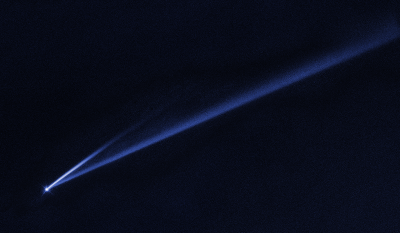What Did Hubble See on Your Birthday?
On September 25 in 2005
Galaxy NGC 1132
The large elliptical galaxy NGC 1132 likely formed from a group of galaxies that merged together. The galaxy is dubbed a "fossil group" because it contains enormous concentrations of dark matter, comparable to the dark matter found in an entire group of galaxies.

Space is awesome
On September 25 in 2005
Galaxy NGC 1132
The large elliptical galaxy NGC 1132 likely formed from a group of galaxies that merged together. The galaxy is dubbed a "fossil group" because it contains enormous concentrations of dark matter, comparable to the dark matter found in an entire group of galaxies.
Space is awesome












